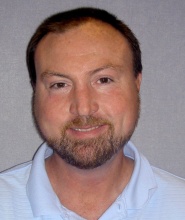Greed may or may not be good, but it’s certainly relevant when making trading decisions. That’s according to Titan Trading Analytics, a

The technology delivers trading signals to hedge funds and other prop traders that include a human element in its models. Titan built its software-as-a-service TickAnalyst Automated Behavioral Trading to look beyond raw data for price moves.
Rather than rely on standard news and data readers, TickAnalyst bases its buy and sell signals on behavioral finance, a school of thought where emotional factors can be represented numerically to inform financial decisions, said John Coulter, the firm’s president and chief executive.
Some traders rely too heavily on raw numbers. “That’s a problem when traders panic or get too confident,” Coulter said.
In times of chaos, human instinct takes over and traders often jump to conclusions, he added. They neglect how rational data points show highly probable events occurring.
As an example, TickAnalyst told a beta tester to sell oil drilling sector stocks early in the year, despite positive industry research in the sector. The system considered different factors of sentiment for its recommendation, Coulter said. Five days after the tester got the first TickAnalyst signal, there was a major correction of 20 percent.
TickAnalyst is sentiment-based. It grades roughly 12 human emotions, such as greed or euphoria, on a numeric basis: It gives each a numerical value and inputs them into an algorithm. To generate buys and sell signals, those values are then grouped with Titan’s internal proprietary sentiment score and a generic news sentiment score, Coulter said.
TickAnalyst analyzes news sentiment and tick data to find complicated patterns across up to eight simultaneous time frames, Coulter said. It creates buy and sell signals and sends them to a trader’s desktop through a browser-based application.
The software factors in 10 years of research for all S&P 500 companies. It will extend its research to all Russell 2000 companies sometime in December.



